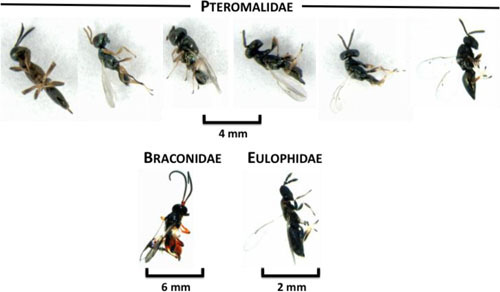The asparagus miner and its natural enemies in Michigan
Better understanding of asparagus miner biological control can contribute to management of this important pest.
The asparagus miner is an insect pest of asparagus that can complete two generations during the growing season in Michigan. It overwinters as a pupa, and adults usually start flying in mid-May. The eggs are laid just under the skin of asparagus stems near the soil surface. Once larvae hatch, they create tunnels in the stems while consuming plant tissue. The asparagus miner is a possible vector for Fusarium, a disease that reduces the lifespan of plants. Miner damage also reduces yield for the upcoming year’s harvest due to larval feeding inside the stems.
The asparagus miner has several naturally occurring enemies that attack it during the course of a season; this phenomenon is called biological control. These natural enemies are parasitic wasps that seek out the pupal stage of the asparagus miner and lay eggs inside the pupae. Once the eggs hatch, the wasp larvae feed on the asparagus miner, and instead of an asparagus miner emerging from the pupa, an adult wasp emerges that then searches for other asparagus miner pupae in which to lay eggs.
Researchers in the MSU Vegetable Entomology Laboratory have found eight morphologically different species of wasps that emerged from pupae of the asparagus miner. These insects were collected from commercial asparagus fields in Michigan (see pictures below). Little is currently known about their biology or exact identity, but ongoing research in these areas will uncover important questions related to increasing their efficacy in commercial asparagus fields. Biological control of the asparagus miner has previously not been explored in the United States, yet this strategy can be an essential component of integrated pest management programs.




 Print
Print Email
Email



